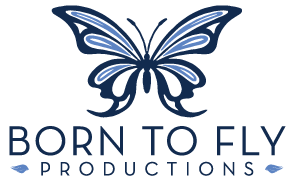
The Next Super Power to Add to Your Aerial Arsenal: Grant Writing
By Teresa Kochis
One of my favorite pastimes as an aerialist is learning about the amazing double lives other aerialists lead. Contrary to popular belief, we don’t all spend every waking moment in spandex and capes in the secret hideout of Cirque du Soleil©. Many of us carry an unexpected second set of perhaps more practical, but no less impressive skills to balance our superhero lifestyles. Not every aerialist is ready to divulge their Clark Kent / Kristen Wells alternate identity, but occasionally you may catch a glimpse. Some of my personal favorites: pharmacist, mathematician, rigger, mother of three and the list goes on.
My double life… Development Director for an arts-based non-profit. Now I know development may not connote a life of glamour and adventure, but it has offered me some perks. One of the best is the ability to write grants for my own aerial projects. Since people are usually more interested in my adventures 20+ feet above the ground than they are in the world of professional grant writing and deadlines, I was pleasantly surprised when AerialDancing.com asked me to share some of my knowledge about this field. The truth, of course, is that knowing how to write a grant is very valuable for anyone in the arts. So listen up, aerialists; throw your cape back, pull your TheraBall up to the computer (it’s not always kryptonite) and prepare for a good 101 on grant writing.
Why Grant Writing is a Super Power
There are some real advantages to knowing how to write grants. The most obvious is the chance that you may actually receive funding! For all you aerialists who are feeling a little tired of “art for art’s sake” and are sick of running on inspiration and dwindling personal funds to make art, applying for grants may be part of the solution. Grant money can mean the ability to compensate yourself and cover critical expenses such as materials, space rental and artist fees. Grant writing is an important tool that can help you reach and sustain your creative aspirations. Here’s how:
•Grants are a great way to support new work. From putting your ideas down on paper to working toward a concrete goal such as a performance or new script, grants provide a step-by-step process that can help motivate you.
•Grants provide an alternative to the for-profit marketplace. On the one hand, you can think of grants as start-up capital to help get your artistic ideas off the ground with hopes that they may one day be commercially viable. If you’re the type who takes one look at reality TV and doubts you’ll be able to commodify your passion, or wonders why you’d ever even want to, grants may be a good way to support your artistic genius without selling your soul.
•Audition your ideas, for a change. In a field where youth and beauty are sometimes as important as technical skill and performance quality in determining whether one is cast for the part or hired for the gig, grants present a refreshing opportunity to pitch your ideas and perhaps even challenge societal norms.
Myths to Debunk
•Grant writing is not a sure shot. I’ve had conversations with people who think that grant writing is easy, as though there’s a magical world of generous benefactors just waiting to throw money at you. Sorry! That is not the case. The reality is that writing a grant is work. If you’re considering starting a non-profit, you should expect it to be equivalent to the amount of work it takes to run a for-profit business and you should research the process thoroughly. It’s also competitive, with sometimes tens or hundreds of people competing for the same grant opportunity. So be prepared to work for it, but don’t be overly intimidated either. The hardest part is getting started. Once you’ve written your first grant, chances are you’ve created a template of language and gathered support materials that you can build on for the next application.
•On many occasions, I have spoken with artists who are frustrated to learn that some grants seem to come with strings attached. There are some unrestricted grants like Artist Fellowships, which the artist can use for whatever purposes they choose. However, other grants such as Project Grants or Commissions often have specific requirements for the use of the funds. For instance, in order to compete successfully for some grants, you have to provide a benefit to the community. Maybe that means incorporating a free educational or performance component into your project. Many artists ask, “Why not just support good art?” Though grants may vary in how much freedom they allow, I personally believe it’s a valuable exercise to think about how your work can and probably already does give value to the community. Providing a community benefit shouldn’t require you to compromise your artistic integrity. Often, it can help you grow as an artist and community member, while helping you develop and expand the audience for your work.
•Remember, aerial circus is an art and you can get grants for it! In spite of the wild revitalization of circus in recent decades, I’m truly surprised when people question whether circus is an art form. I challenge this idea and encourage other aerial circus artists to do the same. While researching this article, I contacted arts administrators from well-known arts organizations and encountered no bias whatsoever against circus arts.
Hold Onto Your Capes! Do’s and Do Not’s in the Exciting World of Grant Writing.
If, by now, you can hardly keep your fingers from flying across the keyboard, here are some resources you can begin to explore for your first grant writing adventure.
There are a lot of resources online that offer grant writing tips, online or in-person courses as well as funder databases and search engines. The New York Foundation for the Arts offers excellent resources including the NYFA Source national directory of awards, services, and publications for artists. In addition, look locally. Start with your state or local arts council. These groups often disburse grants for individual artists and can help connect you to other resources. There are also published books available such as the Artists Guide to Grant Writing by Gigi Rosenberg.
To help launch you on your way, I’m including a few of my personal tips:
•This may be obvious, but read the grant guidelines and make sure you are eligible for all the requirements. Attend scheduled information sessions and ask questions. Review projects that have been funded in the past. Some grantors are willing to answer questions via email or phone as well. Usually this kind of info is stated on the grantor’s website.
•Start your application well in advance of the deadline and make sure you address all of the questions in the application completely and succinctly. Proofread and have your friends proofread to make sure your application reads well and is free of spelling, budget and other simple errors. Follow formatting rules for work samples and test any digital materials on several computers. Paying close attention to the details will help you avoid early elimination in a competitive grant review process.
•Know and stay focused on your mission and project goals; don’t “chase the money.” Make sure the grant is the right fit for the work you are already doing or are firmly committed to doing. If not, there are better ways to expend your energy and time than applying for a grant that you probably won’t be funded for or won’t successfully implement.
•Get to know your community. An important rule is that fundraising is about relationship building. Attend information sessions for the opportunity to meet grant officers, the individuals who will potentially review and hopefully recommend your projects. Speak to artists who have been successful in winning grants in the past. Attend cultural and other community events to meet other artists, possible project partners and potential supporters.
•If you’re funded, congrats! If not, don’t give up! Follow up with the grantor. Often, grantors are happy to provide feedback on your application. This will help you strengthen your next application and stand out to the grantor. Both of these factors may increase your odds of being funded in the next cycle.
Well, I believe my job here is done. Thank you to NYFA and the Massachusetts Cultural Council for answering my questions for this article and to Andy Anello and Denise Falbo for editing behind the scenes. And thank you to AerialDancing.com for the opportunity to share my superheroine expertise. To all of you aerialists, good luck on both your artistic and grant writing adventures!
– The Flying Development Director
Teresa Kochis has practiced aerial arts for the past fifteen years. She instructs and creates original work under the title of Overhead Arts. In her double life, she is also the Development Director for THE POINT Community Development Corporation based in the South Bronx, NYC.



